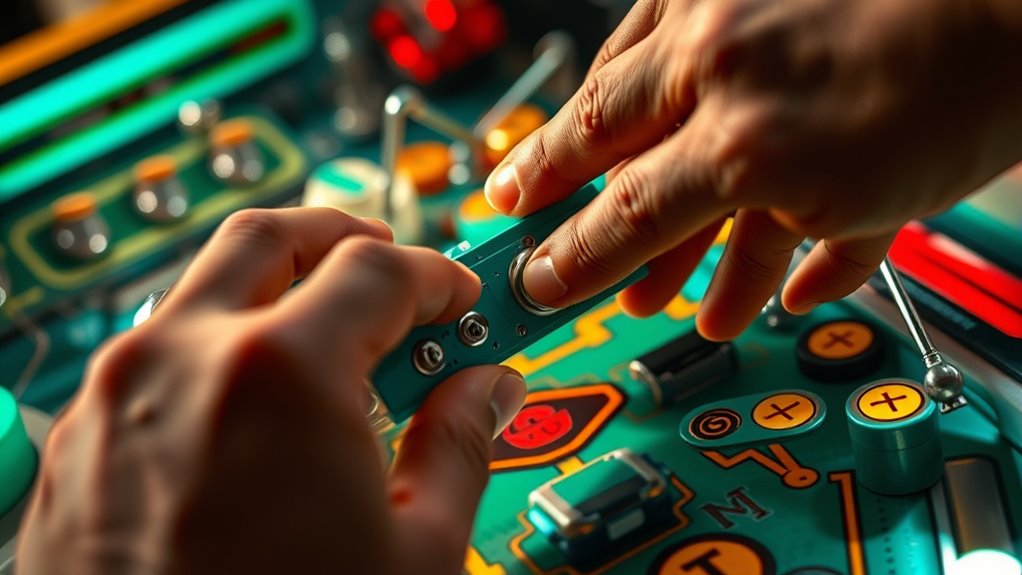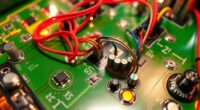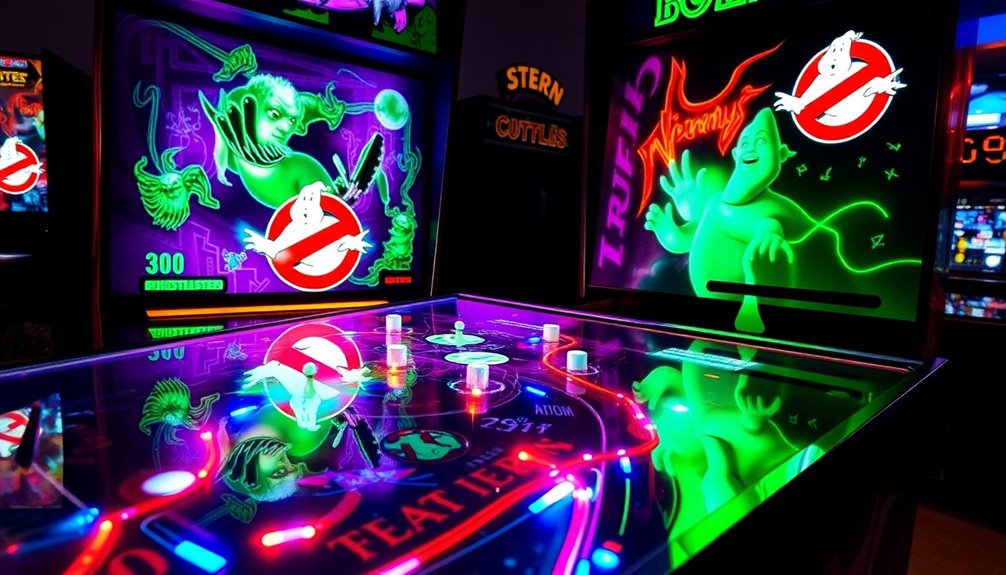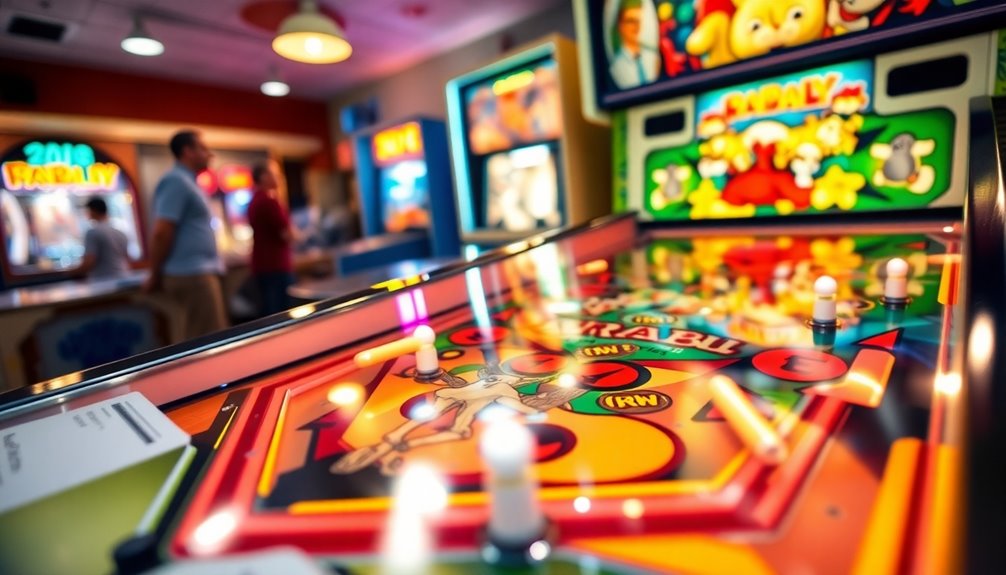To diagnose and fix Flipper issues, start by checking if the problem is hardware or software related. Confirm your device has the latest firmware updates from the official support site, and consider resetting it to factory settings after backing up data. Inspect physical components for damage and test with different cables or computers. If issues persist, consult troubleshooting guides or customer support. Keep exploring for more detailed steps to get your Flipper working smoothly again.
Key Takeaways
- Determine whether the issue is software-related by checking for firmware updates and performing resets if needed.
- Inspect physical components and connections for damage, debris, or wear, using diagnostic tools like a multimeter.
- Test the device with different computers, cables, and environments to rule out external factors.
- Update firmware through the official support website and back up data before performing factory resets.
- Contact customer support or consider professional repair if hardware damage or complex issues are identified.
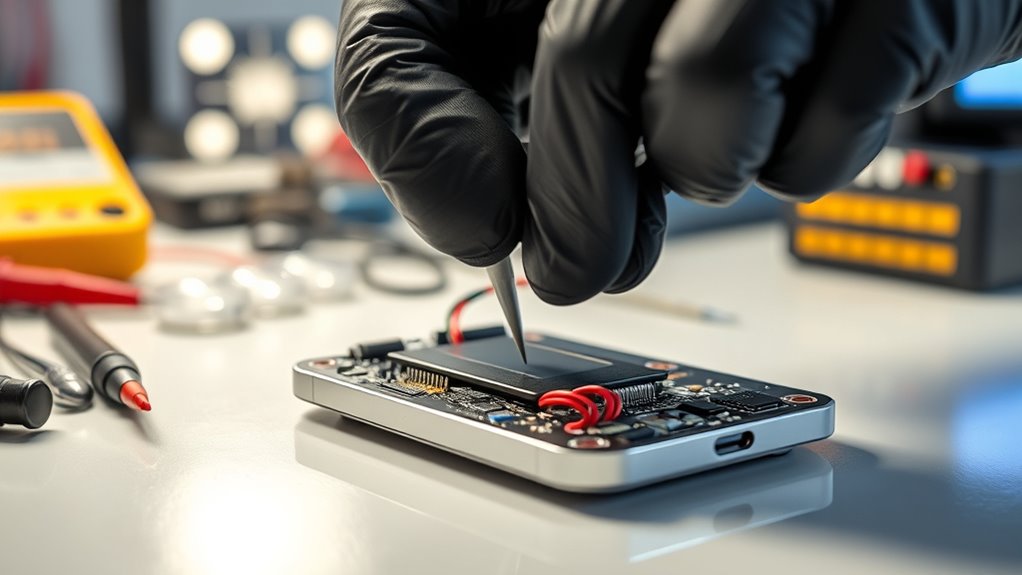
If your Flipper device isn’t responding correctly, diagnosing the problem quickly can save you time and frustration. The first step is to identify whether the issue stems from software or hardware. Performing effective software troubleshooting can often resolve many common problems without needing extensive repairs. Start by checking for any available firmware updates, as outdated firmware can cause functionality issues. Connect your Flipper device to your computer and visit the official support website to see if there are newer versions to install. Sometimes, simply updating the software can fix bugs or compatibility problems that prevent your device from functioning properly. If the device still isn’t responding after updates, try performing a factory reset, but be aware this will erase your custom configurations. Always back up your data before resetting, just in case.
Next, move on to hardware diagnostics if software troubleshooting doesn’t solve the issue. Carefully inspect the device for physical damage — look for loose connections, broken pins, or signs of wear that could be impairing performance. Check the USB port and connectors, ensuring they’re clean and free of debris, as poor contact often causes connectivity problems. If your Flipper has a removable battery or other replaceable parts, test these components to see if they’re functioning correctly. Using a multimeter, you can verify voltage levels and continuity to determine if hardware components are receiving power or if they’re damaged. If you notice any damaged parts, replacing these might restore full functionality. Additionally, considering the hardware quality of your device can help diagnose persistent issues, as lower-quality components are more prone to failure.
Sometimes, the problem isn’t as straightforward and requires more advanced troubleshooting. Connect your Flipper to different computers or use different cables to rule out external connection issues. Also, try running your device in different modes or environments to see if the problem persists across setups. If your device continues to malfunction despite these efforts, consider consulting the official troubleshooting guides or reaching out to customer support. They can provide detailed steps for more complex hardware diagnostics or software repair procedures.
Frequently Asked Questions
Can I Troubleshoot Flipper Issues Without Technical Skills?
Yes, you can try DIY troubleshooting and beginner repair tips for Flipper issues without advanced technical skills. Start by checking connections, resetting the device, and updating firmware if needed. Follow simple guides and watch tutorials to understand basic steps. While some problems may require professional help, many common issues are manageable with patience and careful steps, making troubleshooting accessible even for beginners.
How Long Does It Typically Take to Fix a Flipper?
Ever wonder how long a flipper repair takes? It usually depends on the issue’s complexity, parts availability, and your skill level. Simple fixes might only take a few hours, but more complex repairs could stretch to several days. Keep in mind, if parts are hard to find, the repair timeline can extend further. Staying patient and understanding that some repairs require time helps you manage expectations and guarantees a successful fix.
Are There Common Signs Indicating a Flipper Needs Repair?
You’ll notice signs like unusual flipper noise or a flickering display indicating your device needs repair. If the noise becomes louder or irregular, it suggests mechanical issues. A display that flickers or shows inconsistent images often points to electrical problems or loose connections. Pay attention to these symptoms, and address them promptly to prevent further damage. Regular maintenance can help catch these signs early, keeping your flipper running smoothly.
What Tools Are Essential for Diagnosing Flipper Problems?
Think of diagnosing your flipper as being a detective on a mission. You’ll need essential diagnostic tools like a multimeter to check electrical signals and troubleshoot equipment, along with a screwdriver set to explore internal components. These tools act as your magnifying glass, revealing hidden issues. With them, you can pinpoint problems swiftly, turning a frustrating puzzle into a clear path to repair, ensuring your flipper’s smooth operation once again.
Is It Safe to Attempt Repairs Myself or Should I Hire a Professional?
You should consider professional repair instead of attempting DIY safety repairs, especially if you’re unfamiliar with electronics. While fixing a flipper might seem straightforward, mishandling components can cause further damage or safety hazards. Hiring a professional ensures the job gets done correctly and safely, protecting you from potential risks. Trust their expertise for a reliable fix, rather than risking harm or costly mistakes with DIY repairs.
Conclusion
Now that you know how to diagnose and fix flipper issues, don’t let a malfunction ruin your gameplay. Imagine losing a vital game because your flipper stuck at a critical moment—frustrating, right? But with these simple steps, you can prevent that. Take control of your machine, troubleshoot confidently, and enjoy seamless play. Your skills and patience can turn a frustrating setback into a quick fix, keeping your game smooth and your victories coming.
